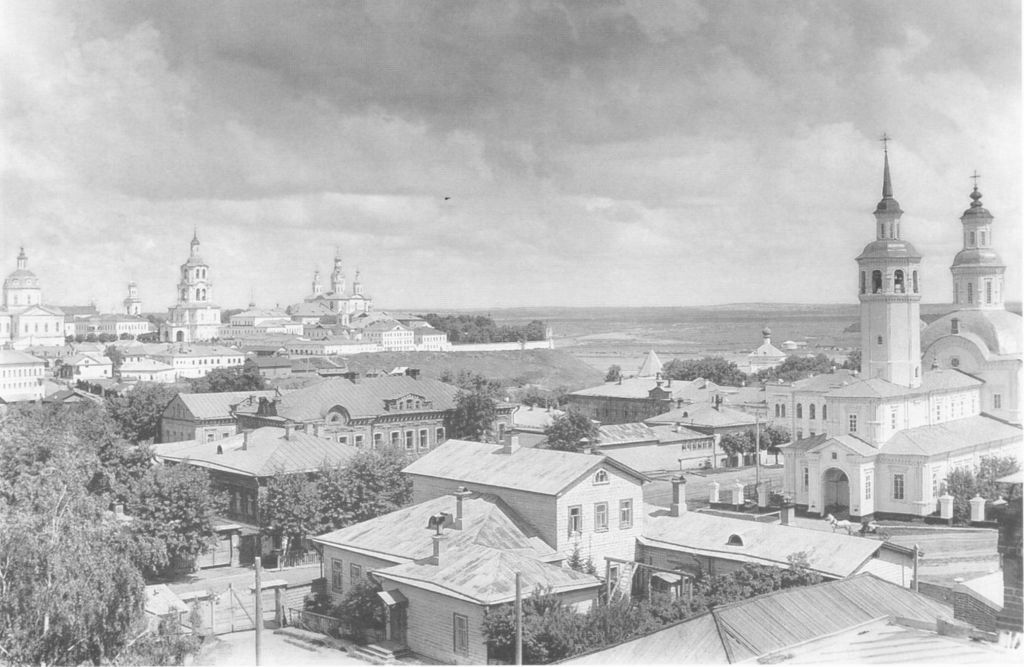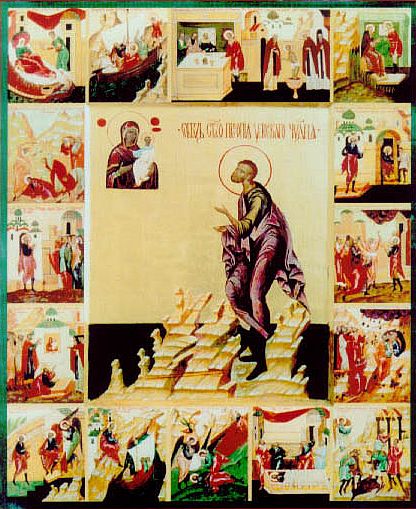|
Khlynov
Kirov ( rus, Ки́ров, p=ˈkʲirəf, a=Ru-Киров.ogg) is the largest city and administrative center of Kirov Oblast, Russia. It is located on the Vyatka River in European Russia, 896 km northeast of Moscow. Its population was 518,348 in 2020. Kirov is a historical, cultural, industrial, and scientific center of Priural'e (territory on the west side of the Ural Mountains); place of origin for Dymkovo toys; the most eastern city founded during the times of Kievan Rus'. The city also had the names of Khlynov (, from 1457 to 1780), and Vyatka (, until 1934). History Principality and republic The native Slavic tribe of Central Russia and Volga regions, the Vyatichis (also called Viatichi), mixed here with the Novgorodian Slovenes and Finno-Ugric people. According to the medieval chronicles the first Russian settlements in the area appeared in 12th century. Kirov itself was first mentioned (as Vyatka) for the first time in 1374 when Novgorod ushkuyniks plu ... [...More Info...] [...Related Items...] OR: [Wikipedia] [Google] [Baidu] |
Kirov Oblast
Kirov Oblast (russian: Ки́ровская о́бласть, ''Kirovskaya oblast'') is a federal subject of Russia (an oblast) in Eastern Europe. Its administrative center is the city of Kirov. Population: 1,341,312 ( 2010 Census). Geography Natural resources The basis of the natural resources are forest (mostly conifers), phosphate rock, peat, furs, water and land resources. There are widespread deposits of peat and non-metallic minerals: limestone, marl, clay, sand and gravel, as well as the extremely rare mineral volkonskoite. In recent decades, in the east of the area revealed a minor recoverable oil reserves and deposits of bentonite clays. In the area is the largest in Europe Vyatsko-Kama deposit of phosphate rock. The area is rich in mineral springs and therapeutic mud. On the territory of Kumyonsky District is famous resort town of federal significance Nizhneivkino, which on treatment and rest come to residents of the Kirov region and many regions of Russia. Hydrogra ... [...More Info...] [...Related Items...] OR: [Wikipedia] [Google] [Baidu] |
Novgorod Slavs
The Novgorod Slavs, Ilmen Slavs (russian: Ильменские слове́не, ''Il'menskiye slovene''), or Slovenes (not to be confused with the Slovenian Slovenes) were the northernmost tribe of the Early Slavs, and inhabited the shores of Lake Ilmen, and the river basins of the Volkhov, Lovat, Msta, and the upper stream of the Mologa in the 8th to 10th centuries. The Slovenes were native to the region around Novgorod. There is a belief among researchers that Novgorod is one of the regions which were the original home / Urheimat of the Russians and the Slavic tribes. Like all Eastern Slavs in Russian lands, the Ilmen Slavs had unique characteristics. Ancestors of the Ilmen Slavs who settled in Finnic areas descended from the Severians and the Polabian Slavs, as evidenced by language and traditions (see old Novgorod dialect and Gostomysl for examples). They settled in mostly Finnic areas in Northern Russia, moving along the major waterways, until they met the southward ex ... [...More Info...] [...Related Items...] OR: [Wikipedia] [Google] [Baidu] |
Muscovite Civil War
The Muscovite Civil War, Muscovite War of Succession,Janet L. B. Martin, John D. Martin''Medieval Russia, 980-1584''(1995), p. 400. Cambridge University Press. or Great Feudal War, was a prolonged conflict that cast its shadow over the entire reign of Vasily II of Moscow (from 1425 to 1453). The two warring parties were Vasily II, the Grand Prince of Moscow, as one party, and his uncle, Yury Dmitrievich, the Prince of Zvenigorod, and the sons of Yuri Dmitrievich, Vasily Kosoy and Dmitry Shemyaka, as the other party. In the intermediate stage, the party of Yury conquered Moscow, but in the end, Vasily II regained his crown. It was the first civil war in the history of Muscovy, whose largely peaceful rise had been predicated on a lack of conflict within the ruling family. Background The Mongol invasions of 1236-1241 left the Russian principalities subjugated by the Golden Horde. In the 13th-15th centuries, the Khan of the Golden Horde appointed the Great Prince, who in the 14th c ... [...More Info...] [...Related Items...] OR: [Wikipedia] [Google] [Baidu] |
Yury Of Zvenigorod
Yury Dmitrievich (26 November 1374 in Pereslavl-Zalessky – 5 June 1434 in Galich), also known as George II of Moscow, Yury of Zvenigorod and Jurij Zwenihorodski, was the second son of Dmitri Donskoi. He was the Duke of Zvenigorod and Galich from 1389 until his death. During the reign of his brother Vasily I, he took part in the campaigns against Torzhok (1392), Zhukotin (1414), and Novgorod (1417). He was the chief orchestrator of the Muscovite Civil War against his nephew, Vasily II, in the course of which he twice took Moscow, in 1433 and 1434. Family matters By his wife, Anastasia, the daughter of Yury of Smolensk, Yury had three sons — Vasily Kosoy, Dmitry Shemyaka, and Dmitry Krasny. The marriage to Anastasia made him the brother-in-law of Švitrigaila, Grand Duke of Lithuania. Inheritance and claims At his father's death, Yury received in appanage the towns of Zvenigorod, Ruza, and Galich. Upon his brother's death, Yury immediately asserted his claim to the th ... [...More Info...] [...Related Items...] OR: [Wikipedia] [Google] [Baidu] |
Volga
The Volga (; russian: Во́лга, a=Ru-Волга.ogg, p=ˈvoɫɡə) is the List of rivers of Europe#Rivers of Europe by length, longest river in Europe. Situated in Russia, it flows through Central Russia to Southern Russia and into the Caspian Sea. The Volga has a length of , and a catchment area of «Река Волга» , Russian State Water Registry which is more than twice the size of Ukraine. It is also Europe's largest river in terms of average discharge (hydrology), discharge at delta – between and – and of drainage basin. It is widely regarded as the Rivers in Russia, national river of Russia. The hypothetical old Russian state, the Rus' Khaganate, arose along the Volga . Historically, the river served as an important meeting place of various Eurasian civilizations. The river flows in Russia through forests, Fo ... [...More Info...] [...Related Items...] OR: [Wikipedia] [Google] [Baidu] |
Kama River
The Kama (russian: Ка́ма, ; tt-Cyrl, Чулман, ''Çulman''; udm, Кам) is a long«Река КАМА» Russian State Water Registry river in . It has a drainage basin of . It is the longest of the and the largest one in discharge. At their confluence, in fact, the Kama is even larger than the Volga. It starts in the |
Veliky Ustyug
Veliky Ustyug (russian: Вели́кий У́стюг) is a town in Vologda Oblast, Russia, located in the northeast of the oblast at the confluence of the Sukhona and Yug Rivers. As of the 2010 Census, its population was 31,665. Veliky Ustyug has a great historical significance and was one of the major cities of the Russian North. It preserved some of the past urban structure and many of the architectural monuments. It has lost its former leading role and is nowadays mostly known for tourism. Location and etymology Veliky Ustyug is close to the confluence of the Sukhona (flowing from the west) and the Yug (from the south) rivers. Downstream from this confluence the rivers form a single waterway known as the Northern Dvina, sometimes referred to as the Little Northern Dvina. The historical center of the town is on the left (high) bank of the Sukhona and, in contrast to many historical Russian towns, there is an embankment along the Sukhona. Dymkovskaya Sloboda and Troit ... [...More Info...] [...Related Items...] OR: [Wikipedia] [Google] [Baidu] |
Novgorod Republic
The Novgorod Republic was a medieval state that existed from the 12th to 15th centuries, stretching from the Gulf of Finland in the west to the northern Ural Mountains in the east, including the city of Novgorod and the Lake Ladoga regions of modern Russia. The Republic prospered as the easternmost trading post of the Hanseatic League and its Slavic, Baltic and Finnic people were much influenced by the culture of the Viking-Varangians and Byzantine people. Name The state was called "Novgorod" and "Novgorod the Great" (''Veliky Novgorod'', russian: Великий Новгород) with the form "Sovereign Lord Novgorod the Great" (''Gosudar Gospodin Veliky Novgorod'', russian: Государь Господин Великий Новгород) becoming common in the 15th century. ''Novgorod Land'' and ''Novgorod volost usually referred to the land belonging to Novgorod. ''Novgorod Republic'' itself is a much later term, although the polity was described as a republic as early a ... [...More Info...] [...Related Items...] OR: [Wikipedia] [Google] [Baidu] |
Pskov Republic
Pskov ( la, Plescoviae), known at various times as the Principality of Pskov (russian: Псковское княжество, ) or the Pskov Republic (russian: Псковская Республика, ), was a medieval state on the south shore of Lake Pskov. Originally a principality and then a part of the Novgorod Republic, Pskov became an independent republic in 1348. Its territory was roughly equivalent to the modern Pskov Oblast of Russia. The capital city was Pskov. Origin As a principality, Pleskov (old name of Pskov) was ruled by separate princes, but often it was ruled directly from Novgorod until the mid-13th century when the city began accepting as rulers princes exiled from their possessions. Each exiled prince that went to Pleskov could be proclaimed prince there (if the principal throne wasn't already occupied by another prince). In any case, he could at least get an honorary reception and live there without fear for his life. After the disintegration of Kievan Rus ... [...More Info...] [...Related Items...] OR: [Wikipedia] [Google] [Baidu] |
Veche
Veche ( rus, вече, véče, ˈvʲet͡ɕe; pl, wiec; uk, ві́че, víče, ; be, ве́ча, viéča, ; cu, вѣще, věšte) was a popular assembly in medieval Slavic countries. In Novgorod and in Pskov, where the veche acquired great prominence, the veche was broadly similar to the Norse ''thing'' or the Swiss Landsgemeinde. Etymology The word is inherited from Proto-Slavonic *''větje '', meaning 'council', 'counsel' or 'talk' (which is also represented in the word "soviet", both ultimately deriving from Proto-Slavic verbal stem of *větiti 'to talk, speak'). There is a relation to "-vice" in "advice", and somewhat more distantly to Sanskrit "Veda", Germanic words like "wise" (English), "weten" (Dutch, "to know"), "witch" (Slavonic: ''věšt-ica'') and many others, which however come from a different Indo-European root. Likewise, there exists misinformation claiming that the semantic derivation that yields the meaning of the word under consideration is paralle ... [...More Info...] [...Related Items...] OR: [Wikipedia] [Google] [Baidu] |






